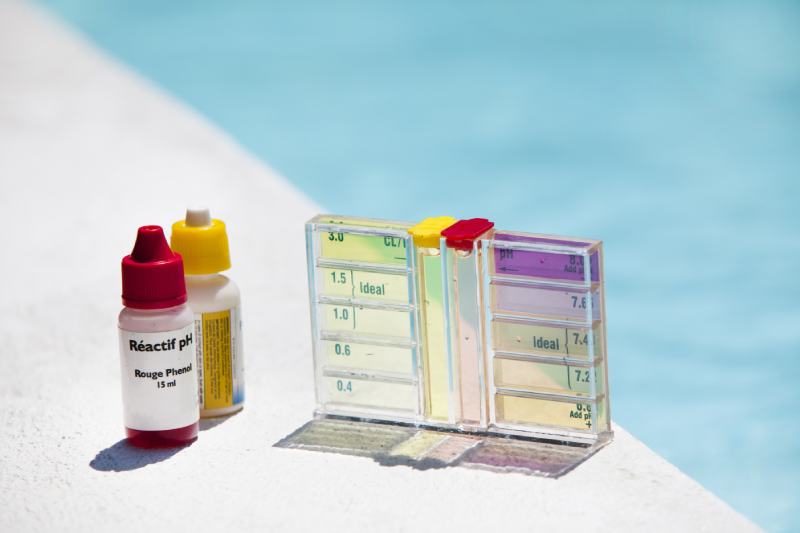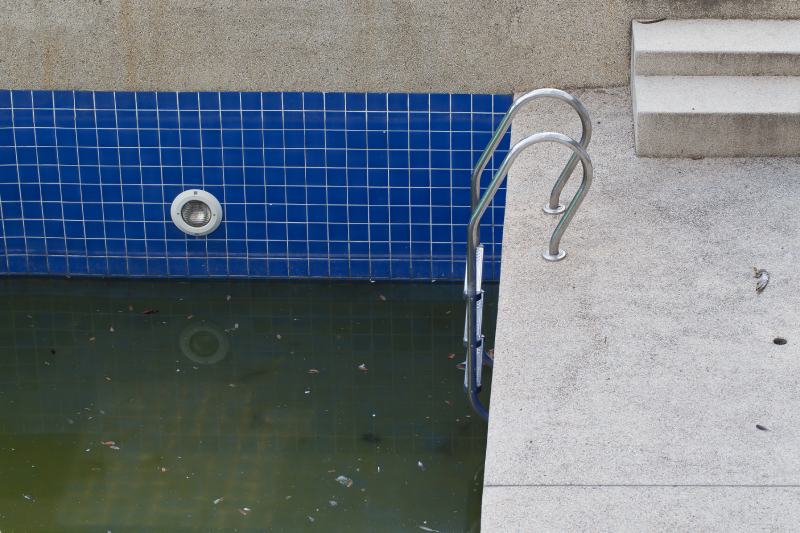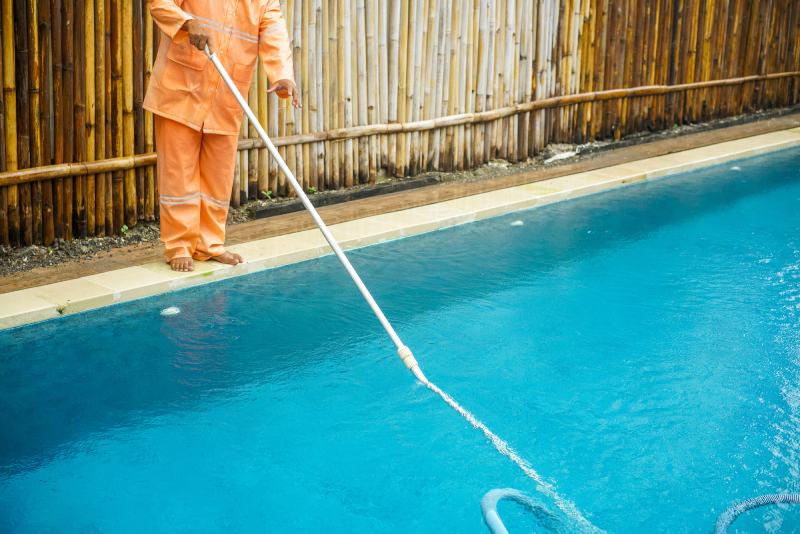Alkalinity, although not as commonly discussed as the pH level in a swimming pool, plays a crucial role in maintaining the overall health and cleanliness of your pool. This guide provides an in-depth understanding of alkalinity and its importance, the consequences of its imbalance, and how to handle high alkalinity in your pool.
Understanding Alkalinity in Your Swimming Pool
So, what exactly is alkalinity? Alkalinity refers to the water’s capacity to neutralize acids, which is determined by the levels of carbonate and bicarbonate. These substances work to stabilize the pH of the water, preventing sharp fluctuations that could potentially be harmful to both swimmers and pool equipment. When the alkalinity level is within the recommended range, it facilitates the effectiveness of the pool’s disinfection system, ensuring a cleaner and safer pool environment.

The Importance of Balanced Alkalinity Levels in Pool Water
One of the main reasons for maintaining balanced alkalinity levels in your pool water is to keep the pH level stable. The ideal range for alkalinity is between 80-120 parts per million (ppm). When these levels are balanced, it ensures optimal water clarity, enhances swimmer comfort, and helps preserve the longevity of your pool’s surfaces and equipment. Furthermore, a well-balanced alkalinity level prevents the water from becoming corrosive or scaling, both of which can damage the pool infrastructure and the filtration system.
How to Detect High Alkalinity: The Role of Pool Chemistry Testing Kits
Detecting high alkalinity levels in your pool is easier than you might think. There are various pool chemistry testing kits available on the market today that make this task straightforward. You can choose from various testing methods, including strips and digital test kits, depending on your preference and budget.
Testing Pool Water with Strips
Pool water testing strips are a quick and easy method to assess your pool’s alkalinity. These strips contain special chemicals that react to the substances in your pool water. By simply dipping a strip into your pool, the strip changes color according to the levels of alkalinity present. Then, you compare this color to a chart that indicates the alkalinity level.
Understanding Test Results
After testing your pool’s water, it’s essential to understand the results accurately. An alkalinity reading higher than 120 ppm signals high alkalinity, which requires immediate steps to lower it. Conversely, a reading lower than 80 ppm means your pool’s alkalinity is too low, which is equally detrimental.

Consequences of High Alkalinity in Your Pool
Allowing high alkalinity levels to persist in your pool can lead to several problems. Firstly, it results in the water becoming cloudy, which not only looks unappealing but also makes it harder for swimmers to see clearly while underwater. Additionally, high alkalinity encourages scale formation on pool surfaces and equipment, which can be challenging to clean and may eventually damage the equipment. Lastly, high alkalinity renders the sanitizing system less effective, meaning the pool will not be as clean and safe as it should be.
Consequences of Low Alkalinity in Your Pool
Just as with high alkalinity, low alkalinity can also lead to its own set of problems. Low alkalinity can result in pH levels bouncing back and forth. This fluctuation can cause the water to turn corrosive, which can harm swimmers and damage pool equipment. Also, corrosive water can lead to metal staining and etching of the pool surfaces.

Health Risks of Swimming in a Pool with High Alkalinity
While there may not be severe immediate health effects for swimmers in a pool with high alkalinity, prolonged exposure can potentially cause skin and eye irritation. Furthermore, as mentioned earlier, high alkalinity reduces the effectiveness of disinfection methods, leading to the growth and spread of harmful bacteria and algae, which can indeed pose health risks to swimmers.
How to Lower Alkalinity in Your Pool: Practical Steps
Reducing high alkalinity is not as daunting as it may seem. One common method to lower alkalinity is by adding an acid, such as muriatic acid or sodium bisulfate, into your pool. However, it’s vital to add the acid slowly and in smaller quantities, regularly testing the water after each application to monitor the changes.
How to Raise Alkalinity in Your Pool: Useful Tips
If the alkalinity level in your pool is too low, you can use substances such as baking soda or soda ash to increase it. As with decreasing alkalinity, you should add these substances slowly and in small amounts, regularly testing the water to check for improvements.
Fastest Methods to Lower Pool Alkalinity
The fastest method to lower alkalinity involves adding an acid to your pool. However, this method requires caution. Always ensure to add the acid slowly, preferably in a slurry form, and constantly monitor the alkalinity level to prevent it from dropping too low.

Soda Ash vs Baking Soda: What’s Best for Adjusting Pool Alkalinity?
The choice between using soda ash and baking soda depends on your pool’s current condition. Soda ash affects both the pH and alkalinity, while baking soda only increases the alkalinity. Both substances have their benefits and should be used based on your pool’s specific needs.
Maintaining Pool Surfaces: The Impact of Alkalinity Levels
Proper alkalinity levels contribute to the overall maintenance of your pool surfaces. High alkalinity levels can lead to scaling on the pool surfaces and equipment, whereas low alkalinity can cause corrosion. Maintaining the appropriate alkalinity level helps protect these surfaces and increases their lifespan.
The Role of Cyanuric Acid in Balancing Pool Alkalinity
Cyanuric acid is a stabilizer used in pools to prevent the loss of chlorine due to sunlight. It’s important to note that cyanuric acid also contributes slightly to the alkalinity level of your pool. Therefore, it’s crucial to factor in its effects when attempting to balance your pool’s alkalinity.
Achieving Ideal Alkalinity Levels: Between 80 ppm and 120 ppm
Striving to maintain alkalinity levels between 80 and 120 ppm ensures that your pool’s pH level remains stable. This not only guarantees an ideal swimming environment but also helps prevent potential damage to your pool and its equipment.

Your Role in Keeping Your Pool’s Water Chemistry Balanced
Regular testing and adjustments are crucial in maintaining a healthy swimming pool. It’s a good idea to test your pool’s water at least once a week during peak swimming season. Also, after heavy rainfall or high usage, testing is recommended. By properly understanding and managing your pool’s water chemistry, you ensure a clean, safe, and refreshing swimming environment.



